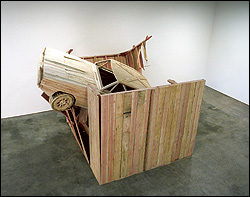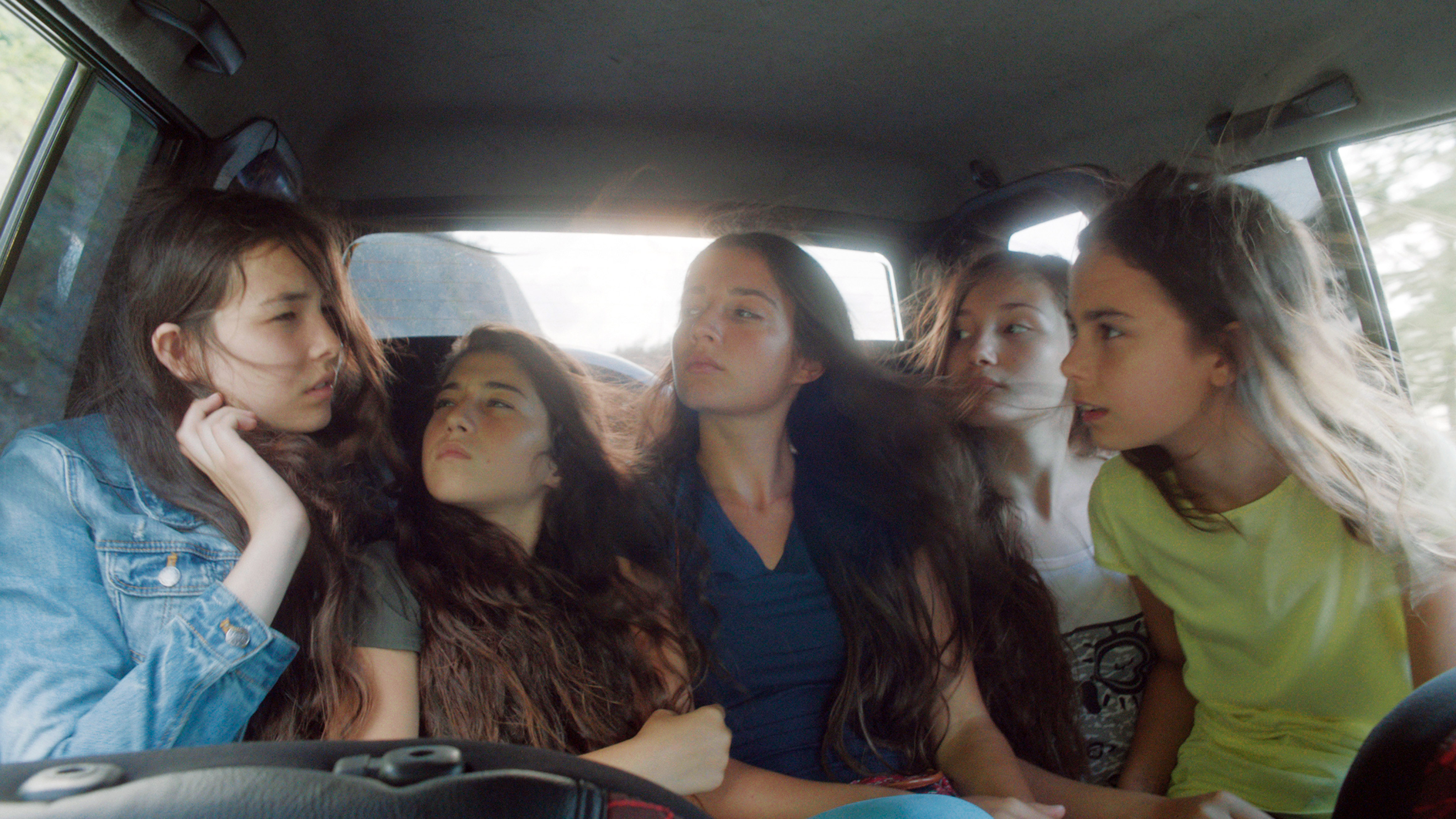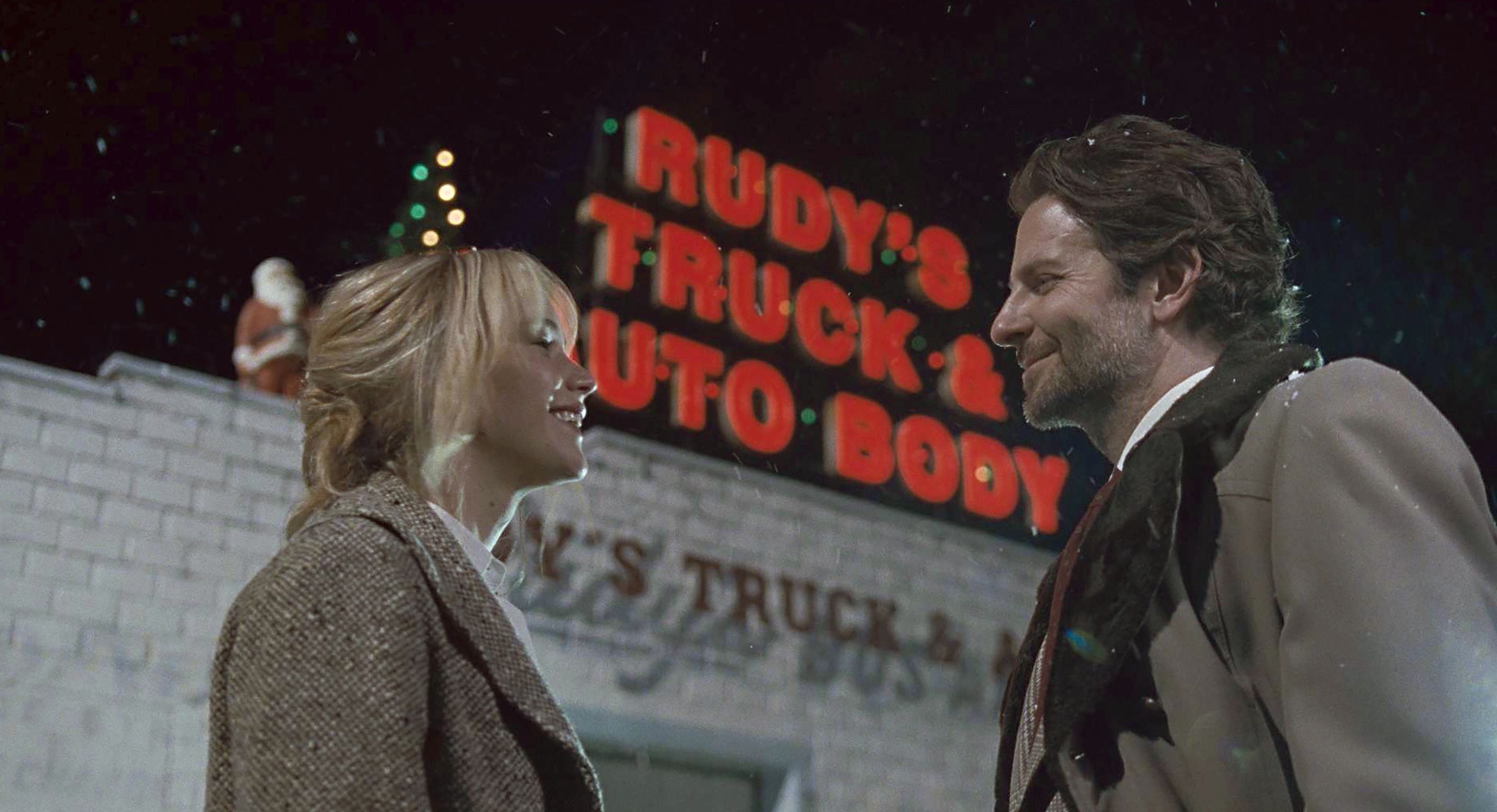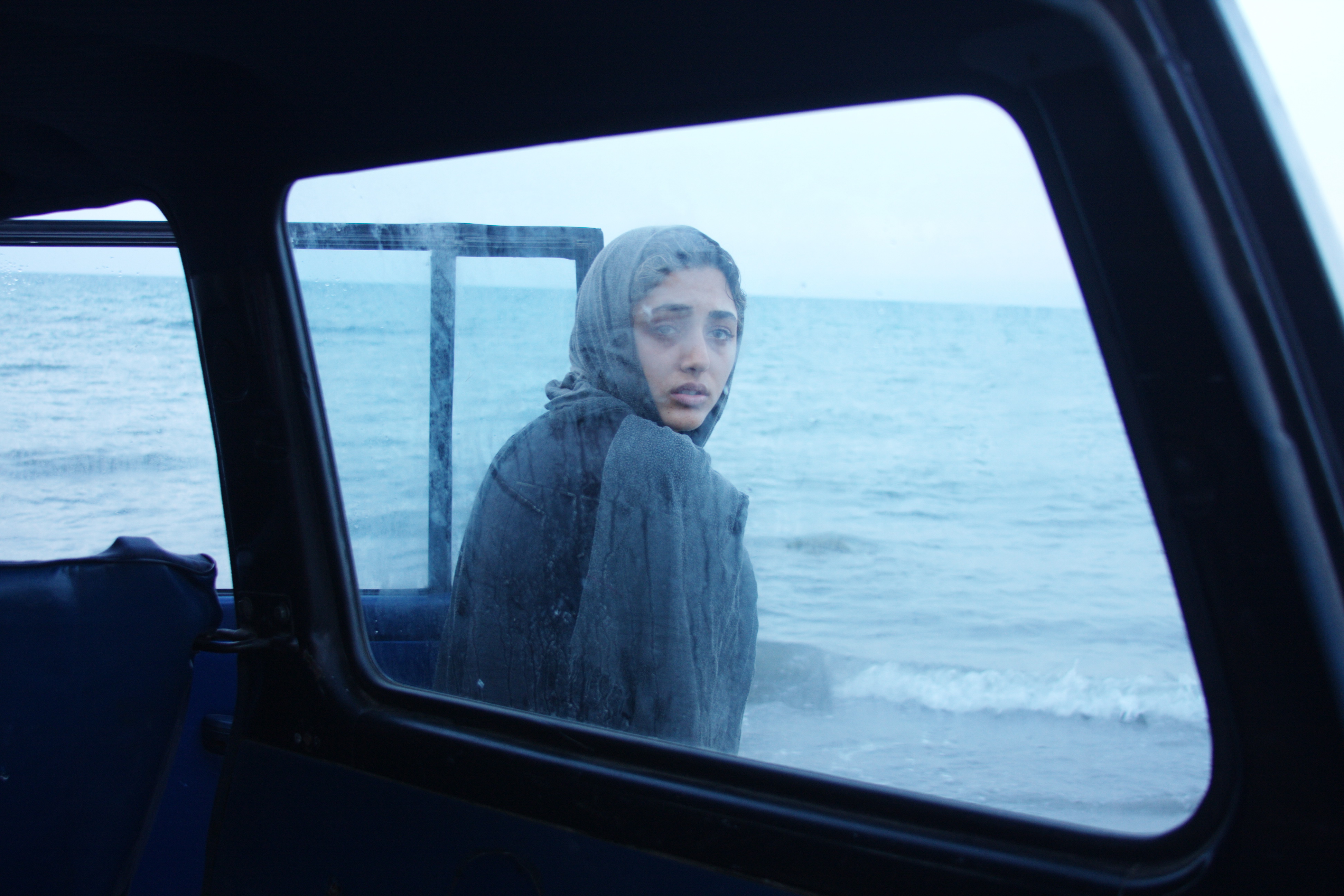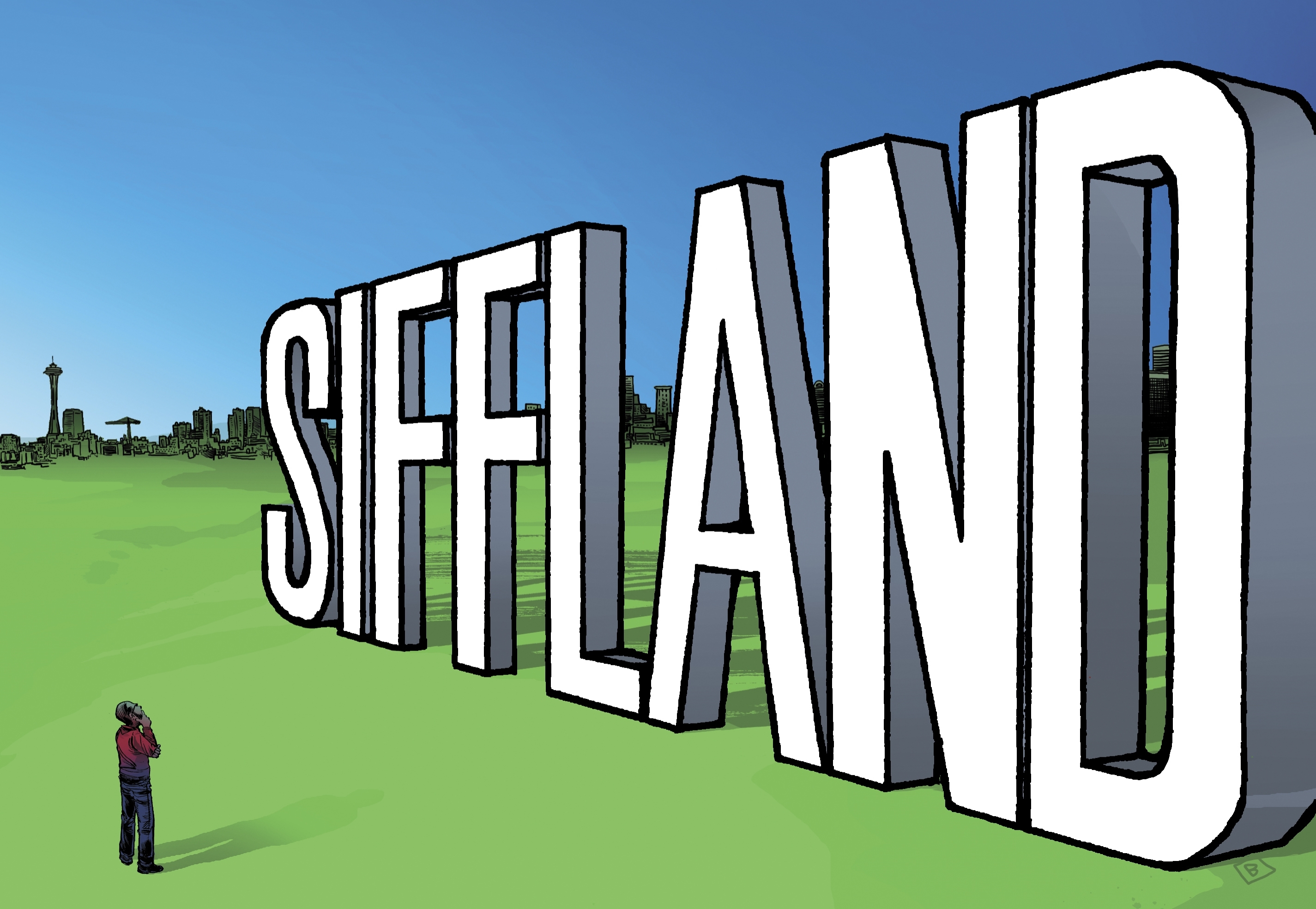Right after 9/11, some will recall, the German avant-garde composer Karlheinz Stockhausen notoriously said the attacks were “the greatest work of art in the cosmos . . . compared to that, we composers are nothing.” Crazy, sure, but he was onto something: The destructive imagination, evil as it is, can devise things no creative artist could imagine. Then the artist or novelist or filmmaker has to ask, “Wow, why didn’t I see that coming? How did that thing get made?” It changes the world, changes the canvas, demands a new kind of paint and a new way of seeing. Artists can no more look away from terrorism than we can stop reading the news; it has to be engaged somehow—but how?
There’s a lot of what we might call terror art being produced right now, some directly 9/11-related, some of it linked to Iraq, some of it with native roots extending back to Timothy McVeigh and Ted Kaczynski. At the movies, we’ve got Islamic suicide bombers in Paradise Now (see review, p. 81) and the recent The War Within (soon to be on DVD). Never released in the U.S., but now apparently available on certain cable services, is The Hamburg Cell, a British docudrama about the 9/11 hijackers themselves. New in paperback, Lorraine Adams’ award-winning novel Harbor (Vintage, $13.95) follows a shadowy but not unsympathetic band of Arab immigrants in Boston, where they fall under the scrutiny of police who can’t quite sort out who’s a terrorist and who’s not.
And, really, the artist’s acknowledgement of the tropes and iconography of terror goes back farther than we’d like to admit. The 1999 movie The Terrorist gorgeously rendered a jungle-dwelling group of suicide bombers in south India (basically the same terrain of the Tamil Tigers, who pioneered the technique before the Palestinians). The bombers of Joseph Conrad’s 1907 The Secret Agent show up in Hitchcock’s 1936 adaptation, Sabotage, and Russian literature is thick with bomb-throwing anarchists and assassins.
When I spoke to The War Within actor/co-writer Ayad Akhtar during a recent Seattle visit, he mentioned the need “to peer beneath those rhetorical positions” of evil as they might be applied to his character. Sept. 11 was one impetus for the project, he explained: “Watching the social body re-form itself around this wound [of 9/11], and watching the political discourse emerge, and feeling in a sense that we were sort of missing some key element here. Which was what the human reality that was being expressed by this [act] . . . was.” (That reality includes his character, an innocent student, being kidnapped from Paris and sent to a Pakistani jail to be tortured; radicalization soon follows.)
The figure of the suicide bomber is especially confounding to the Western viewer, Akhtar adds, because we value the individual so highly. “To simplify or reduce his otherness to an ‘us-ness’ would really be a falsification. This [movie] really isn’t about a meeting between us and them. His ‘them-ness’ had to be preserved in a kind of way. There is easier recourse to a collective identity within this Eastern notion [of self] than there is in the Western notion.” He cites the pan-Islamic concept of umma, that all believers are bound together, creating a collective identity “formed through victimization and suffering.” In this way, the individual bomber has already been obliterated even before he touches the trigger.
READING ADAMS’ Harbor gives something of the same sense of an immigrant self in flux: Her protagonist is Algerian, with a background in that country’s extremely violent postcolonial history. Everything about him and his housemates is murky and marginal. Do they want to assimilate or assassinate? The cops aren’t sure; do those circled dots on a subway map indicate locations for coffee carts or something more ominous? Adams’ accomplishment is to make us believe both at the same time, to make the possible terrorist also a Horatio Alger figure, a striver trying to forget his horrible past.
He’s less the rejectionist than The War Within‘s bomber, and certainly less than the Unabomber, whose Montana shack is rendered twice in Richard Barnes’ photographs at the Western Bridge gallery in SoDo, where the “Crash. Pause. Rewind.” exhibit runs through March 4. (It also includes installations referencing Kaczynski’s Unabomber shack and the tape-loop horror of endlessly crashing jets, most of them created pre-9/11.) You’ve got Kaczynski’s cabin physically present in an FBI warehouse, moved whole to California as legal evidence. And you’ve got it physically absent, bounded by chain-link fencing—rather like the World Trade Center pit in microcosm—back in the woods where Kaczynski turned his back on the modern world. Unlike the umma, he’s a guy obsessed with self and purity and isolation, living off the grid and making everything of wood. (Indeed, sculptor Chris Larson re-creates a life-size Kaczynski shack being exploded by an all-wood Dukes of Hazzard Plymouth Charger—our crass culture having its revenge on his fanatical austerity.)
I think much of this current crop of art is dealing with the ontology of terror—not just its roots or its actors, but its reduction of binaries like other/us, group/individual, existence/annihilation into a new entity. In political terms, terrorism is merely a means to an end: the U.S. out of Iraq and Arabia. Israel out of Palestine. For the artist, it’s a new category—thing and anti-thing, whose expression is simultaneously its extinction. Stockhausen stated it badly, but maybe that’s what he was getting at: 9/11 was cosmic like some sort of interstellar collapse.
Back in the real world, Paradise Now director Hany Abu-Assad sees this nihilism as a logical response to the powerlessness felt by his duo of Palestinian suicide bombers: “They are average. For them, they don’t see other options. We have some unhealthy behaviors, but this is because we have an unhealthy situation. We’ve been under an occupation for more than 60 years. Even if I think the occupation is responsible for these hopeless actions, still it’s my job [as a filmmaker] to create alternatives for the resistance. Because I don’t believe there is no other option. You don’t need to kill yourself in order to say, ‘Yes, I have rights.'”
He also cautions against equating all such acts of terrorism. “The conflict with suicide bombers in the West is different than the conflict in Palestine. Because in Palestine you have physical oppression from the state of Israel. Which is different from what you have with the politics of the United States with the [Iraq war].”
And, of course, we know there are going to be more movies and novels about that war, and about 9/11, and about terrorism in general. Just as there was a lag in Holocaust movies and literature immediately after World War II, the wreckage has to be cleared away before you can put something new in its place.
Western Bridge, 3412 Fourth Ave. S., 206-838-7444, www.westernbridge.org. Open noon–6 p.m. Thurs.–Sat.
